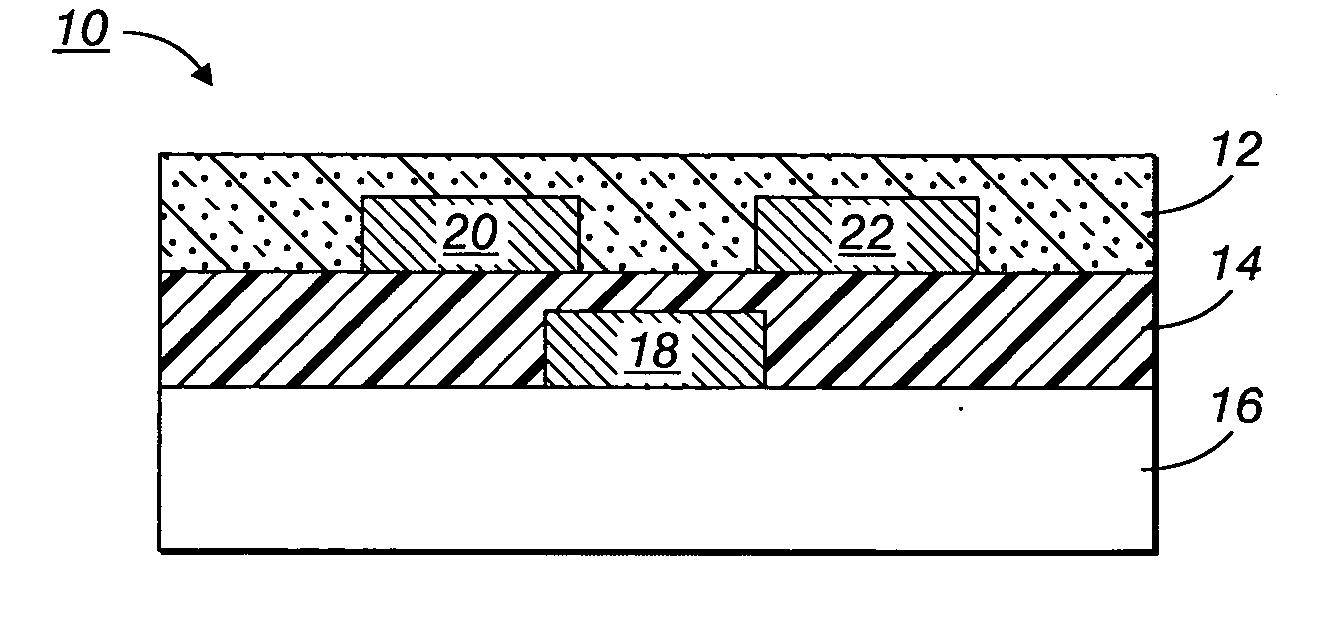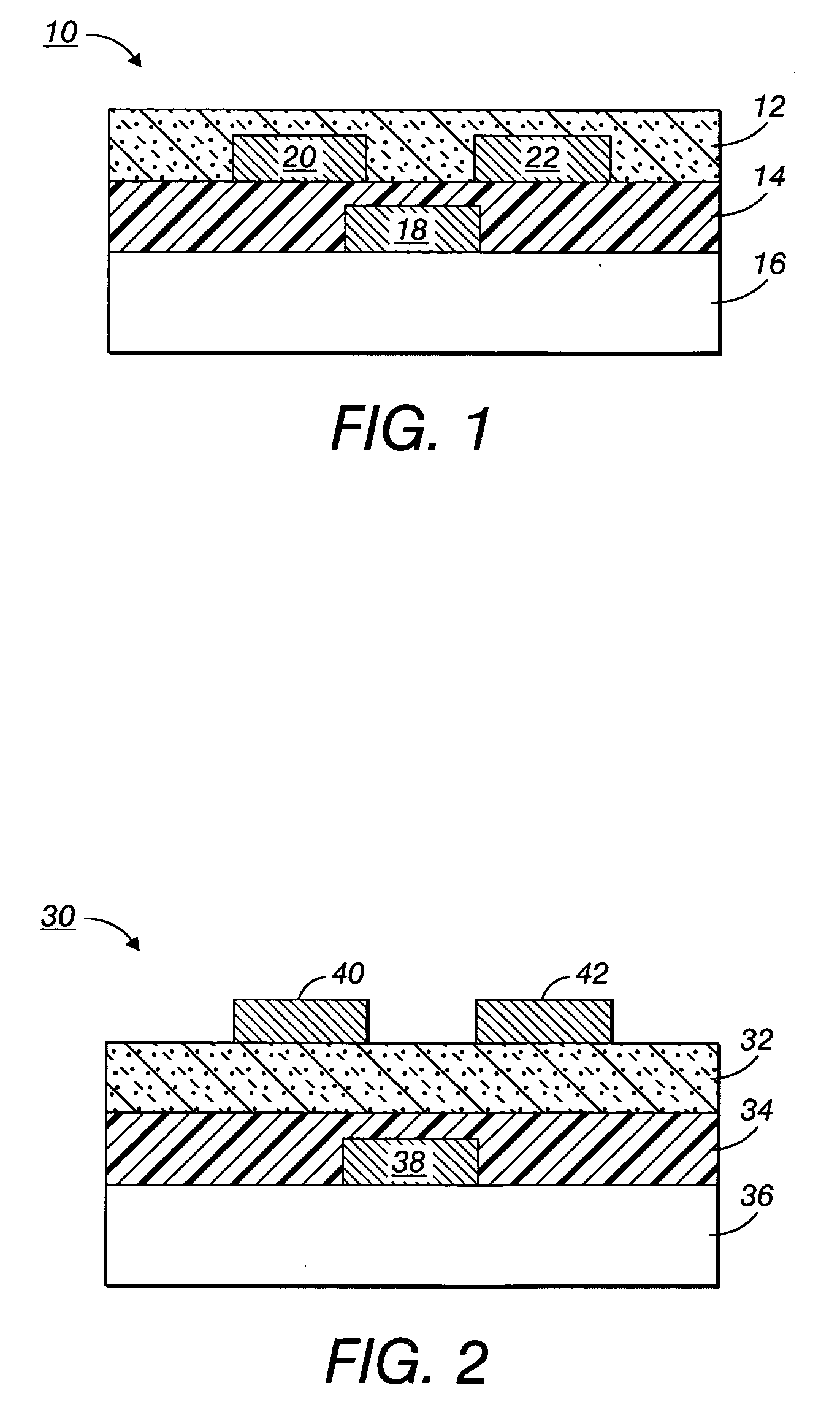Thin film transistors including indolocarbazoles
a technology of indolocarbazole and film transistor, which is applied in the direction of basic electric elements, electrical apparatus, and semiconductor devices, can solve the problem of not being suitable for low-cost otft applications
- Summary
- Abstract
- Description
- Claims
- Application Information
AI Technical Summary
Problems solved by technology
Method used
Image
Examples
example 1
(a) Synthesis of 5,11-Dioctylindolo[3,2-b]carbazole (1)
[0065] 5,11-Dihydridoindolo[3,2-b]carbazole was synthesized by double Fischer indolization starting from phenylhydrazine and 1,4-cyclohexanedione according to the method described in B. Robinson, J. Chem. Soc. 1963, 3097-3099.
[0066] A freshly prepared 50% aqueous NaOH solution (4 mL) was added to a well-stirred mixture of 5,11-dihydridoindolo[3,2-b]carbazole, (0.513 g, 2 mmol), benzyltriethylammonium chloride (0.09 g, 0.4 mmol), 1-bromooctane (1.55 g, 8 mmol), and DMSO (20 mL) in a 100-mL flask under an argon atmosphere. The mixture was stirred at room temperature for 2.5 h and then heated to 65° C. and maintained at this temperature for 4 h. Subsequently the reaction mixture was cooled down to room temperature and poured into 200 mL methanol with stirring. The precipitated yellow solid was filtered off and washed with water, and 3 times each with N,N-dimethylformamide, methanol, and acetone. The yellow solid was purified by c...
example 2
(a) 5,11-Bis(4-octylphenyl)indolo[3,2-b]carbazole (2)
[0073] 1-Iodo-4-octylbenzene was first prepared as follows. A mixture of 1-phenyloctane (14.87 g, 78.13 mmol), iodine (7.93 g, 31.25 mmol), H5IO6 (3.56 g, 15.63 mmol), acetic acid (40 mL), deionized water (7 mL), and 98% sulfuric acid (2.59 g) in a 100 mL flask was heated at 80° C. for about 3 h until the purple iodine color disappeared. The reaction mixture was extracted with dichloromethane, neutralized with saturated aqueous NaHCO3, and washed three times with water. The organic layer was separated, dried over MgSO4, filtered, and the solvent was removed using a rotary evaporator. After column chromatography on silica gel using hexane, 22.53 g of a colorless viscous liquid was obtained; 1H NMR indicated that the crude product was a mixture of 1-iodo-4-octylbenzene (69%), 1-iodo-2-octylbenzene (24%), and unreacted 1-phenyloctane (7%). This crude product was used in subsequent preparation of 5,11-bis(4-octylphenyl)indolo[3,2-b]c...
example 3
(a) Synthesis of 2,8-dichloro-5,11-didodecylindolo[3,2-b]carbazole (3)
[0084] To a well-stirred suspension of 4-chlorophenylhydrazine hydrochloride (24.5 g, 0. 137 mol) in ethanol (200 mL) in a 500-mL flask was added a solution of sodium acetate trihydrate (56.34 g, 0.414 mol) in water (100 mL), and the resultant mixture was stirred for 15 min at room temperature. Subsequently, a solution of 1,4-cyclohexandione (7.67 g, 68.4 mmol) in ethanol (50 mL) was added, followed by addition of 50 mL of acetic acid. The reaction mixture was heated at 50° C. for 1 h before cooling down to 0° C. and maintained there for 1 h. The precipitated light yellow crude cyclohexane-1,4-dione bis[(4-chlorophenyl)hydrazone] was filtered, washed with water, air-dried, and added in small portions to a mixture of acetic acid (75 mL) and sulfuric acid (15 mL, 98%) in a 1-L flask with stirring at 10° C. over a period of 10 min, and then allowed to warm to 25° C. and stirred for 10 min. Subsequently, the mixture ...
PUM
 Login to View More
Login to View More Abstract
Description
Claims
Application Information
 Login to View More
Login to View More - R&D
- Intellectual Property
- Life Sciences
- Materials
- Tech Scout
- Unparalleled Data Quality
- Higher Quality Content
- 60% Fewer Hallucinations
Browse by: Latest US Patents, China's latest patents, Technical Efficacy Thesaurus, Application Domain, Technology Topic, Popular Technical Reports.
© 2025 PatSnap. All rights reserved.Legal|Privacy policy|Modern Slavery Act Transparency Statement|Sitemap|About US| Contact US: help@patsnap.com



